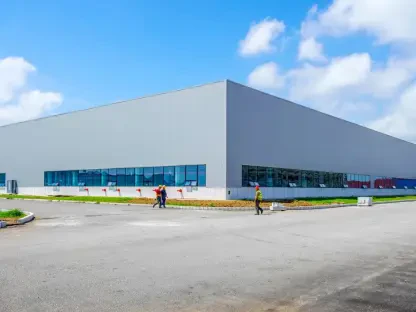The rise of e-commerce has significantly amplified the need for enhanced coordination and real-time updates in logistics operations. YRC, a prominent carrier managing substantial freight volumes across various regions, faces the challenge of ensuring seamless inventory data alignment from each warehouse hub. This alignment can substantially reduce errors, streamline package flow, and enhance customer satisfaction. By implementing advanced multi-warehouse tracking systems, YRC can offer a clear picture of goods’ locations at any given time, enabling managers to react promptly to changing demands.
The Importance of Real-Time Inventory Data
Synchronizing data across all YRC locations provides a unified view of stock levels, facilitates expedited transfers during shortages, and ensures timely deliveries. This minimizes overstock or wasted resources, creating a more efficient logistics network. Efficient multi-warehouse management demands constant information exchange. When an item arrives at a YRC hub, the system updates its stock count accurately while informing other locations of the change, ensuring no facility is surprised by unexpected shortages or surpluses.
For instance, if there’s a sudden surge in demand in the northeast, the system identifies excess inventory in a Midwest facility and schedules a transfer. A consistent, up-to-date inventory baseline aids all warehouse operators, from inbound shipment handlers to outbound order fulfillers. Early flagging of potential inconsistencies, such as discrepancies between system and physical stock counts, prompts necessary audits or recounts, reducing risks of stockouts or overstocking. Automated updates, which log item movements from the receiving area to the packing station, help eliminate opportunities for human error.
Leveraging User-Friendly Online Platforms
Leveraging a user-friendly online platform stands out as a potent tool for shipment monitoring and guarantees shipments follow their intended routes. Package tracking, through a simple reference number input, grants users real-time insights about a parcel’s location, estimated arrival time, and any issues affecting transit. This real-time information is vital for both daily operations and long-term strategic planning. Managers can track items in transit between facilities, verify arrivals at the correct regional warehouse, and confirm timely deliveries to the end recipient. This transparency builds trust among shippers, carriers, and customers by reducing guesswork and clarifying responsibilities, especially when delays occur.
Clear, synchronized data benefits extend beyond warehouse staff to include vendors and carriers. Vendors gain confidence that their goods will arrive correctly with minimal misrouting risks. Carriers can accurately plan routes and estimate capacities, minimizing wasted space and idle time. Customers tracking packages experience peace of mind knowing their item is optimally located. Shared visibility aids in prioritizing high-need shipments, ensuring timely arrivals.
Automation in Multi-Warehouse Management
Automation also sharpens the ordering process. When a warehouse’s stock dips below a threshold, the platform alerts for inventory shifts from a nearby site, preventing last-minute order fulfillment scrambles and lowering expedited shipping costs. This data-driven approach ensures operational decisions are objective, consistent, and reliable. Automated updates, which log item movements from the receiving area to the packing station, help eliminate opportunities for human error. Scanners automatically updating shipping details and distributing fresh data to linked YRC hubs mean staff spend more time on strategic planning rather than routine tasks.
Unified data fosters accountability. Delay logs clarify which facility was responsible, allowing quick root cause identification and problem resolution. This traceability deters repeat errors and reinforces a culture of continuous improvement. Aligning multi-warehouse data seamlessly provides businesses with a competitive edge by allowing a proactive, rather than reactive, response to demand fluctuations. Businesses can forecast using insights from multiple YRC sites, adjusting inventory ahead of potential shortages.
Enhancing Customer Experience Through Improved Logistics
The rapid growth of e-commerce has heightened the need for better coordination and real-time updates in logistics operations. YRC, a leading carrier that handles large freight volumes across various regions, faces the challenge of ensuring seamless inventory data synchronization from each warehouse hub. This synchronization is crucial as it can significantly reduce errors, streamline package flow, and boost customer satisfaction. By adopting advanced multi-warehouse tracking systems, YRC can maintain a comprehensive view of the exact locations of goods at any time. This capability allows managers to respond swiftly to shifting demands, ensuring efficient operations. Implementing these systems means that logistics managers can make informed decisions quickly, optimizing inventory flow and enhancing overall service reliability. This strategic improvement not only aids in minimizing discrepancies but also contributes to a more responsive and customer-centric logistical framework, helping YRC maintain a competitive edge in the fast-paced e-commerce landscape.









